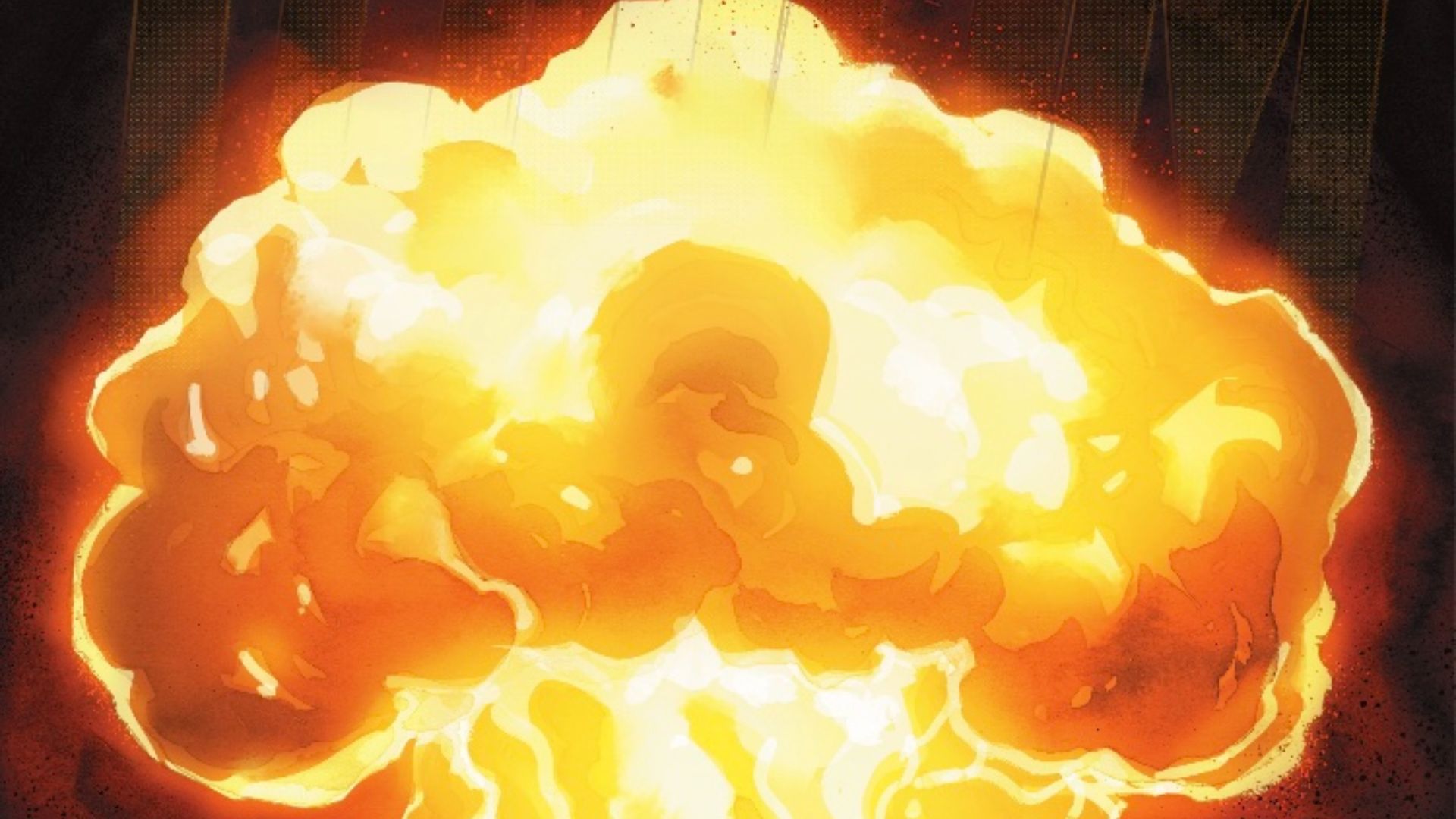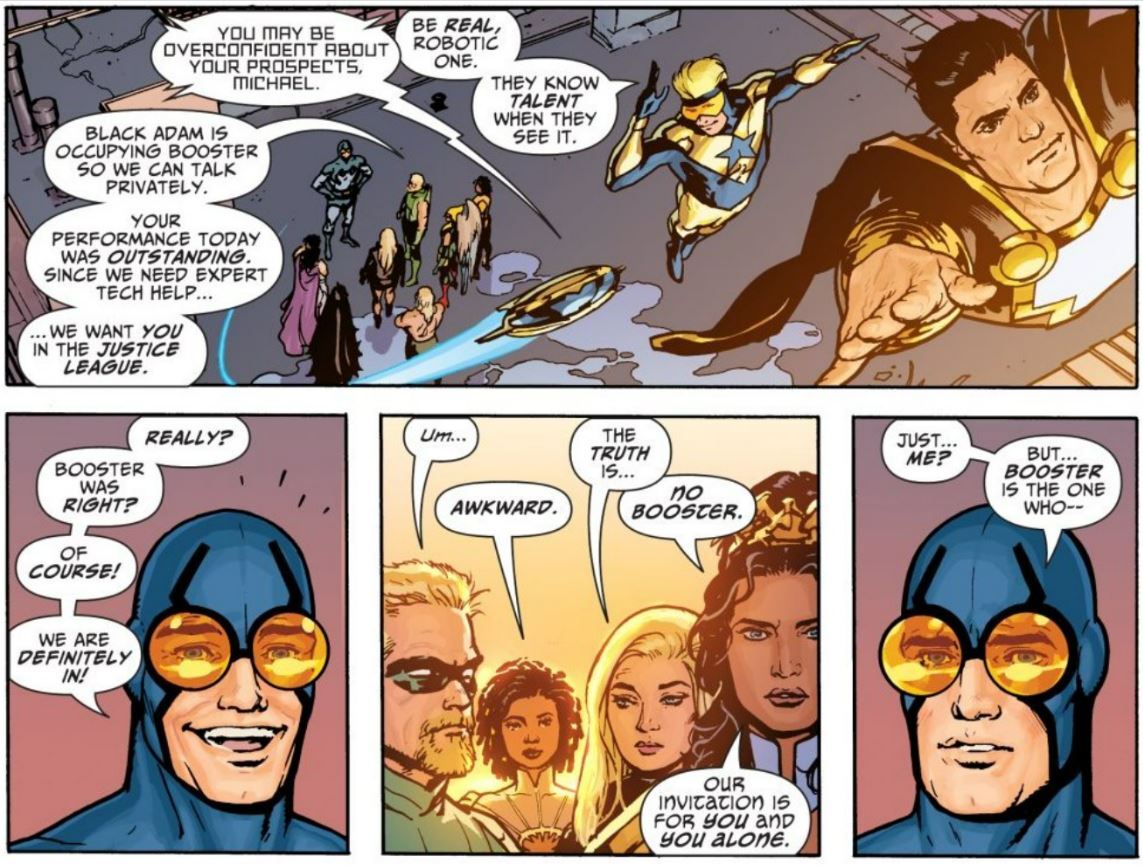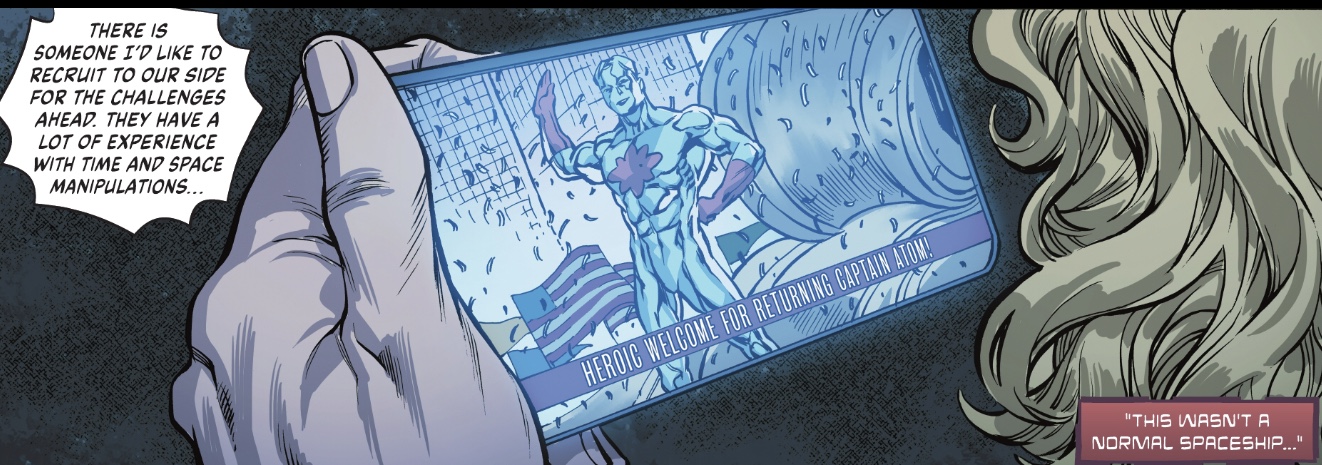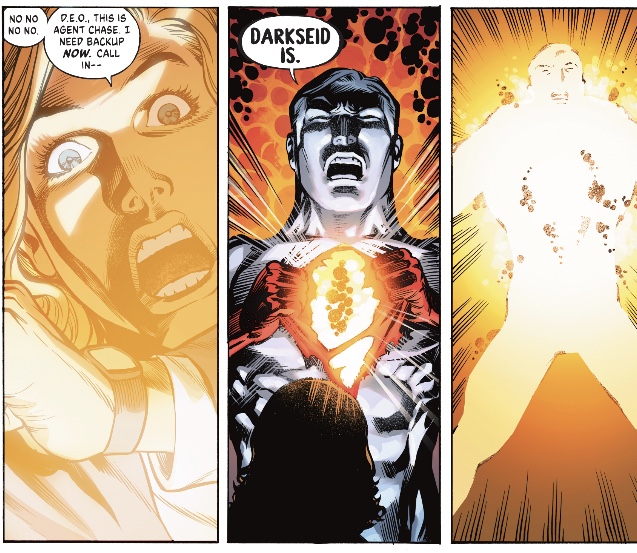New DC continuity rules put to test in latest Justice League and Infinite Frontier stories
Recent issues of Justice League, Blue & Gold, and Infinite Frontier raise the question of how much continuity matters in the new DCU

DC has made it clear to its readers in recent years its 80-plus year publishing history is all in "continuity." But two main questions from this new-(ish) policy remain unanswered.
The first is are there any narrative rules governing how conflicts that arise from all the publisher's reboots and retcons over the years are to be settled?
Or in other words, are the current versions of DC Universe characters bound by any laws of the natural passage of time and stories that they have appeared in that conflict with one another?
We recently detailed DC's mostly indirect, but still fairly clearly communicated new policy on continuity. After nearly four decades of being preoccupied with crafting timelines that adhered to a canon, it seemed to have shifted to a much more laissez-faire position.
While it's still possible the upcoming major new Darkseid-centric Crisis DC seems to be setting up will maybe answer some of these questions and lay some continuity ground rules, the publisher seems mostly content to just tell readers every DC story they ever read happened in the Omniverse, and for the moment anyway, it's not really important exactly how and it's up to readers to decide.
The second question that remains to be answered is what readers will ultimately have to 'say' about this approach?
After all, it was a DC-reader partnership that fueled the preoccupation with reboots, retcons, and timelines that fit for so long, with the publisher perceiving the accessibility … or in other words, a reader's ability to understand the throughlines of the DC Universe and not be intimidated by the weight of it … as a priority to its readership and the readers it wanted to reach.
Get the best comic news, insights, opinions, analysis and more!
It's why DC Crises are its defining publishing lynchpin.
Somewhat ironically, during the course of this change in direction, DC has recently introduced a new character, X-Tract, a bounty hunter who apprehends characters from the current DC timeline who appear not to organically belong to it. A sort of continuity cop introduced into a world with less emphasis on continuity.
So an interesting case study in what DC readers are willing to overlook and what X-Tract would be willing to overlook would be a trio of recent DC releases, all seemingly occurring contemporaneously in whatever approximation of current DCU continuity exists.
Spoilers ahead for Justice League #66.
In August 3's Justice League #66 by writer Brian Michael Bendis, a significant threat is posed to the Earth that requires the current core line-up to call in back-up members, and when the alumni reinforcements arrive, as seen below, Booster Gold and Captain Atom can be seen among them.

Now to be perfectly fair, the script may have simply called for unnamed past Justice League heroes to be included in the scene, and veterans artist Phil Hester chose Booster and Captain Atom. Or maybe Bendis or an editor named some characters for Hester. Captain Atom does, in fact, get a line.
But there's no suggestion of intentional conflict or apathy here. That sort of scene in which characters are seen in cameo has played out thousands and thousands of times over the decades at Marvel and DC where there are tens of thousands of characters and dozens of storylines to keep track of at any given time.
However, the inclusion of those two characters does seemingly conflict with a couple of other very recent DC stories, including perhaps its current most high-profile series that is helping define its new approach to continuity - Infinite Frontier.
But we'll get to that in a moment.
Booster Gold's inclusion in the scene is the easiest to reconcile. In July 20's Blue & Gold #1 by Dan Jurgens and Ryan Sook co-starring Booster Gold and Blue Beetle, of course, the issue's major plot point that will seem to drive the entire series is the duo tries to impress the Justice League (the current roster from the Bendis series) in order to be invited back as active members, only for the team to invite Blue Beetle but reject Booster … with extreme prejudice.

Whether that could potentially have happened before or after the events of Justice League #66, either way, the two stories are a bit at odds with one another.
Booster doesn't seem like a character that would get such an emergency call given the League's opinion of him and Booster might not be too eager to answer it even if they did, given their rejection.
But regardless of whether there was a mutual awareness of plot points, readers can certainly just explain to themselves the situation was so dire the Justice League called him anyway and either Booster was eager to please to change their mind or it happened before.
Captain Atom's appearance is a little tougher to self-explain, however.
In July 13's Infinite Frontier #2, Captain Atom is a major plot point. Having died (in exposition) during the events of 2020's Dark Nights: Death Metal, he appears to be one of those dead characters the Multiverse's reset at the climax of the series brought back.

In the issue by series writer Joshua Williamson, his return is depicted as a highly-public media event that gets the attention of Director Bones and Cameron Chase of the DEO. But the conclusion of the issue reveals the Captain Atom that returned was not the Earth-0 Captain Atom who was once a Justice League member, but a Captain Atom of another, unnamed Earth that was knowingly impersonating him. Found out, he blew himself up in a nuclear blast on an Air Force base in Metropolis.

From a 'continuity' standpoint, it's hard to put the two scenes together. Maybe imposter Captain Atom answered the Justice League's call to the real Captain Atom at a decimated Hall of Justice between his public 'return' and Cameron Chase confronting him?
That said, given Chase met the Justice League at a perfectly intact Hall of Justice at the beginning of the issue and immediately before Bones alerted her to Captain Atom, and their meeting in which he kills himself seems to happen a short time later, it's difficult to fit Justice League #66's oval peg into Infinite Frontier #2's round hole.
And the real Captain Atom wouldn't have just remained silent about the imposter if he was alive to answer the Justice League's call before or after the events of Infinite Frontier #2, certainly.
No, this seems one of those times even by the standard rules of comics in which characters appear simultaneously in different stories and you just have to look the other way, Captain Atom's presence in Justice League is a continuity error.
As we say, a common and very likely innocent and perfectly minor and understandable one, but an error nonetheless.
True to our continuing thesis, we inquired with DC about the story points and it hasn't responded. So whether it is or isn't an error, does or does not have an explanation, or is or isn't considered an issue at all, it's up to readers to decide.
So that brings us full circle to leave the question in the hands of readers - does DC's 'it all happened' policy makes conflicts like these easier to accept? Or are you still looking for narrative rules to try to fit the core DC Universe titles together?
You can always weigh in on the topic on our Facebook or Twitter pages.
There likely aren't many continuity conflicts in the best DC stories of all time.
I'm not just the Newsarama founder and editor-in-chief, I'm also a reader. And that reference is just a little bit older than the beginning of my Newsarama journey. I founded what would become the comic book news site in 1996, and except for a brief sojourn at Marvel Comics as its marketing and communications manager in 2003, I've been writing about new comic book titles, creative changes, and occasionally offering my perspective on important industry events and developments for the 25 years since. Despite many changes to Newsarama, my passion for the medium of comic books and the characters makes the last quarter-century (it's crazy to see that in writing) time spent doing what I love most.


